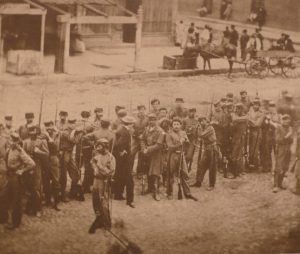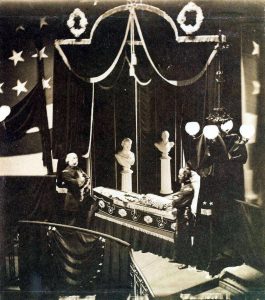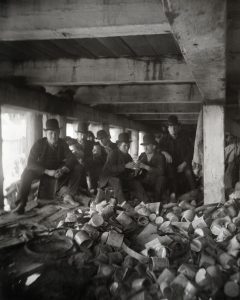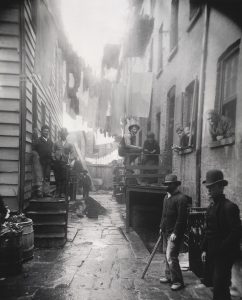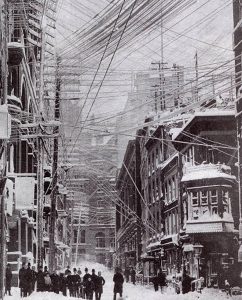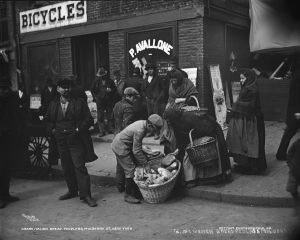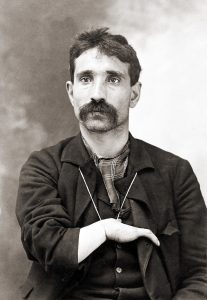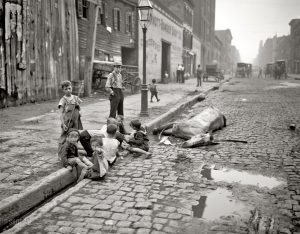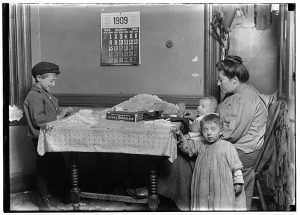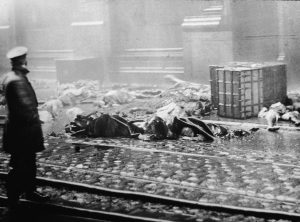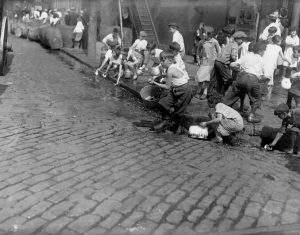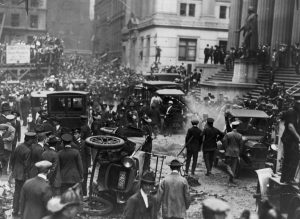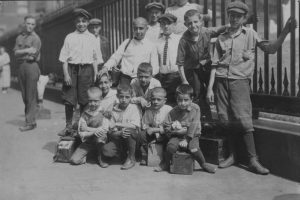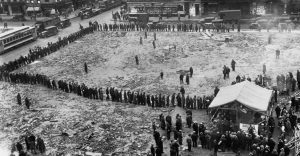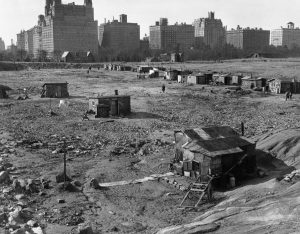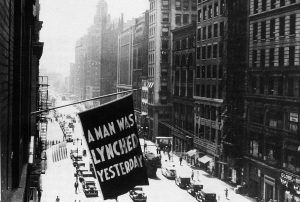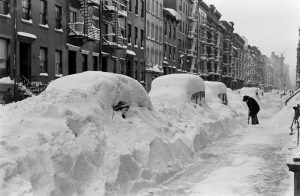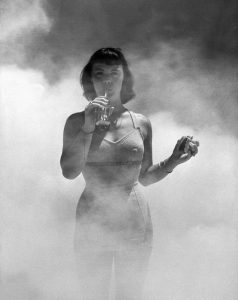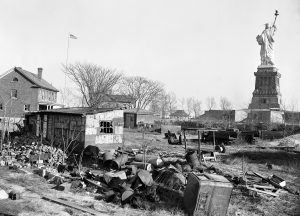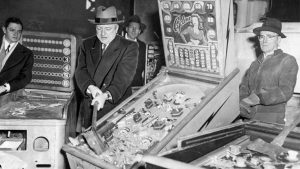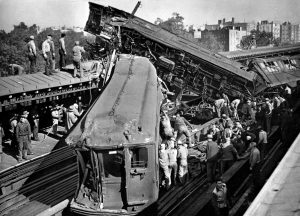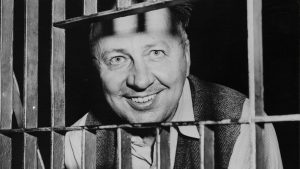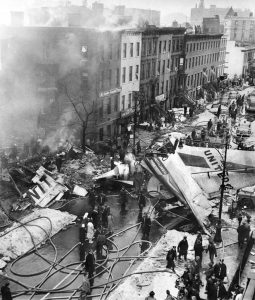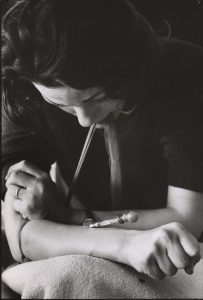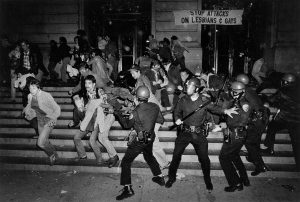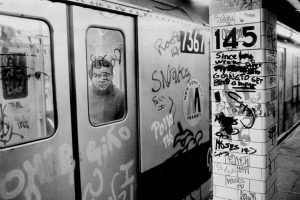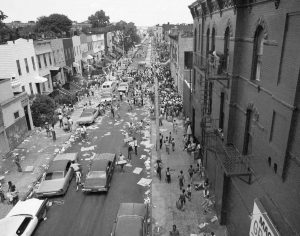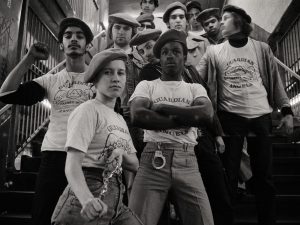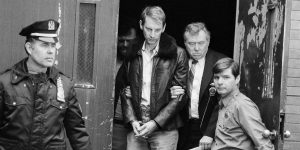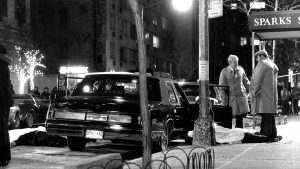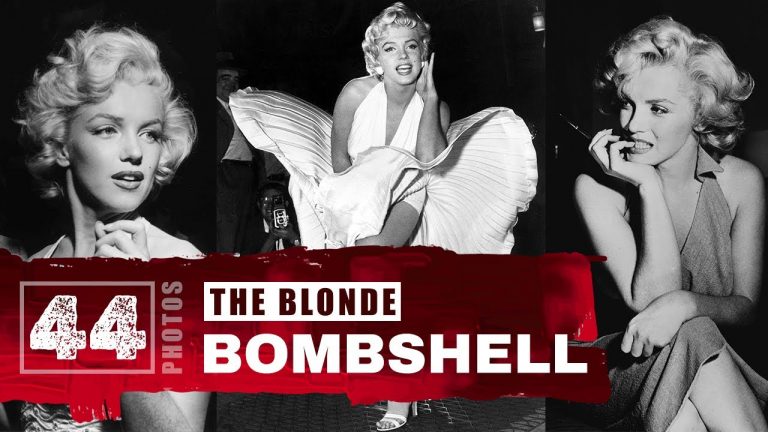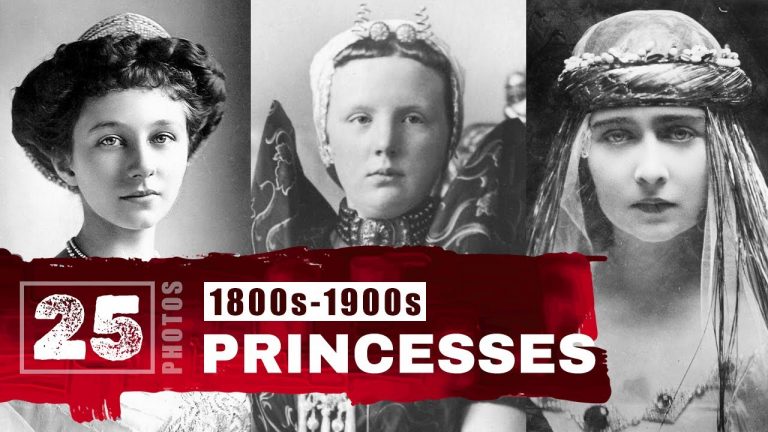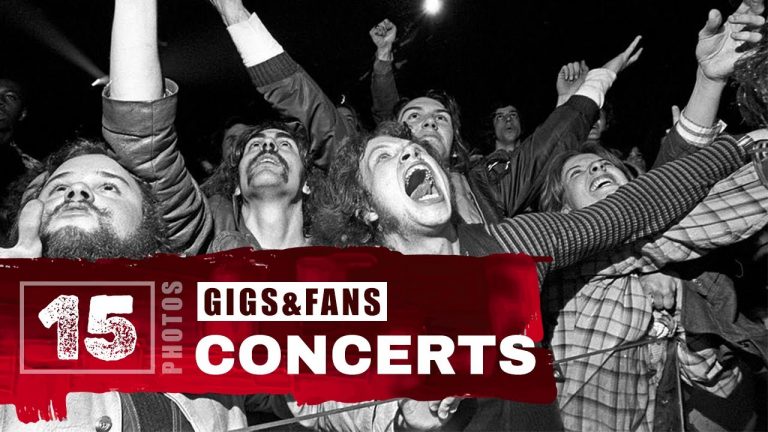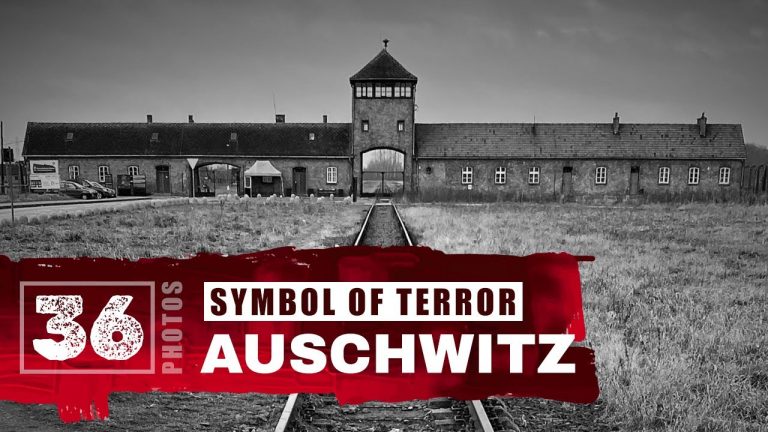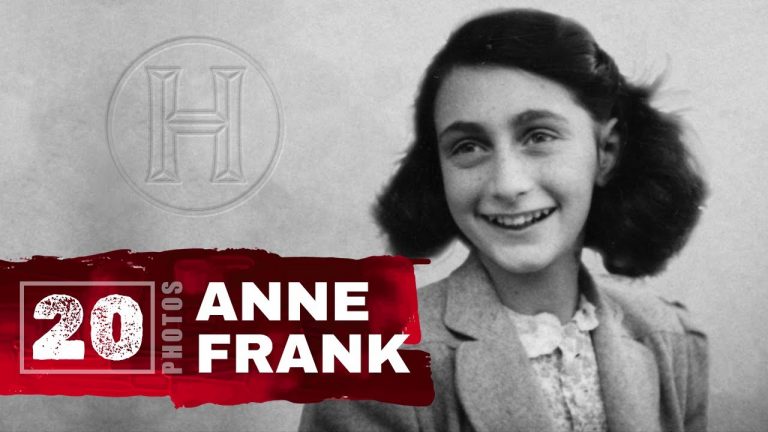Experience a visual journey through New York City’s history, touching on significant events, people, and scenes – from the Draft Riots of 1863 and Lincoln’s wake, to 20th century blizzards, mafia origins, infamous disasters, and defining moments of socio-political change.
Union Soldiers Maintaining Order during NYC Draft Riots (1863)
New York City Draft Riots took place in July 1863 during the American Civil War. Union forces were tasked with maintaining order. Riots resulted in significant casualties, with estimates of around 100 to 120 deaths and many more injuries. It was one of the largest civil disturbance in US history.
Lincoln’s Body in NYC City Hall (1865)
President Lincoln’s body was viewed by over 700,000 people during its three-day lying in state in New York City, making it the largest public viewing of a body in U.S. history.
Short Tail Gang at Corlears Hook (1887)
The Short Tail Gang was one of the most notorious criminal gangs of the Gilded Age, terrorizing the Lower East Side and the docks of Corlears Hook.
Bandit’s Roost (1888)
Bandit’s Roost, 59½ Mulberry Street was a notorious alley in The Five Points, NYC, known for its crime-ridden population and menacing atmosphere. It was later demolished and replaced by a park.
New York City Blizzard of 1888
The Blizzard of 1888 was one of the deadliest in US history, killing 400 people and breaking telegraph wires due to the weight of the ice.
Italian Bread Peddlers, NYC (ca. 1900)
Italian bread peddlers on Mulberry St. in New York in the early 1900s were a common sight, selling fresh bread from large baskets right on the street.
Giuseppe Morello: Mob Founder (1902)
Giuseppe Morello was the founder of the 107th Street Mob and the Morello crime family, now known as the Genovese crime family. It is one of the oldest crime families in New York City.
Children Playing near a Dead Horse (1905)
This iconic 1905 photograph captures 10 children playing in the street gutter and around puddles of raw sewage, next to a dead horse, in front of the McDermott-Bunger Dairy Co. in New York City. The children seem completely unbothered by the horse’s dead body.
Widow and Boy Rolling Papers (1909).
In the tenement buildings, which were often overcrowded and housed lower-income residents, rolling cigarettes was a common practice. Residents would typically purchase loose tobacco and rolling papers from local shops and then roll their own cigarettes at home.
Triangle Shirtwaist Fire Tragedy (March 25, 1911)
A policeman standing in the street observing the dead bodies of garment workers who jumped from the Asch Building during the Triangle Shirtwaist Factory Fire. The disaster resulted in 146 deaths, most of which were immigrant women and girls aged 14 to 23. New York City, March 25, 1911.
Gutter Wine Scramble (ca. 1920)
In New York circa 1920, children rushed to Van Brunt and Sackett streets when they heard that prohibition agents had dumped wine into the gutters, eager to scoop it up.
Wall Street Bombing (1920)
Aftermath of a bombing on September 16, 1920, at Wall Street and Broad Street in New York City that killed 38 people and injured hundreds. Attack historically attributed to anarchists and communist sympathizers of the time.
Bootblacks at Trinity Church (1924)
Bootblacks were individuals, often children or young adults, who worked as shoe shiners in the late 19th and early 20th centuries. They provided a service of cleaning, polishing, and shining footwear, particularly boots and shoes.
Unemployed Americans in Soup Kitchen (1930s)
The Great Depression was triggered by a combination of factors, including the stock market crash of 1929, known as “Black Tuesday.” The soup kitchen lines were often miles long, with thousands of unemployed Americans waiting for a hot meal during the Great Depression.
Hooverville in NYC Central Park (1931)
Hooverville was a shantytown in Central Park, NYC, during the Great Depression. It was home to thousands of homeless people who had been evicted from their homes due to poverty. The term “Hooverville” was used more broadly to describe similar communities across the country.
Flag Flown for Lynching (1936)
Photograph shows a flag flown from an upper story window of the NAACP headquarters announcing that “a man was lynched yesterday.” New York City, United states. 1936.
NYC Blizzard (1947)
The New York City Blizzard of 1947 was one of the worst blizzards in the city’s history, with over 26 inches of snow.
DDT Demonstration at Jones Beach (1948)
DDT sprayed from a TIFA (Todd Insecticidal Fog Applicator) around model Kay Heffernon to supposedly demonstrate it won’t contaminate her food (a hot dog and coke), Jones Beach, New York, 1948
NYC Police Commissioner Smashes Pinball (1949)
In 1949, NYC Police Commissioner William O’Brien smashed a pinball machine in a symbolic gesture to enforce Mayor LaGuardia’s ban on pinball games.
Subway Crash in NYC (1952)
A subway train in New York City collided with another at the the station (Mosholu Parkway), resulting in a crash (October, 1952)
Mad Bomber Arrested (1957)
George Metesky was arrested after a 16 year manhunt and despite his crimes, he was smiling in his mugshot. He planted 33 bombs in New York City between 1941 and 1957.
Deadly Mid-Air Collision, NYC (December 16, 1960)
Aftermath of 12/16/60 mid-air collision over New York City. The wreckage of a United DC-8 fell in Brooklyn narrowly missing a school filled with over 1,000 children, while the second plane crashed on Staten Island. 134 people died in the worst air disaster in history up to that point.
Karen in NYC’s Needle Park (1964)
The photograph was taken in the infamous “Needle Park” in New York City (Bryant Park, Sherman and Verdi Squares), and captures the desperation of heroin addiction in the 1960s and 1970s.
Stonewall Riots (1969)
The Stonewall riots were a series of spontaneous protests by the gay community in response to police violence, and are seen as a watershed moment in the fight for LGBTQ+ rights.
Subway at 145th St. Station (1973)
The Subway at 145th Street Station in New York in 1973. Subway in the 1970s was plagued by crime, graffiti, decay, financial crisis, service reductions, train breakdowns, delays, homelessness, panhandling and strained race relations.
Bedford-Stuyvesant Aftermath (1977)
A street in the Bedford-Stuyvesant section of Brooklyn is full of people and debris, July 14, 1977 following last night’s massive blackout in New York City.
Guardian Angels on NYC Subway (1980)
The Guardian Angels were founded by Curtis Sliwa in 1979 to reduce crime in the NYC subway system. They patrolled the city as volunteers to deter crime and remain active today.
Goetz: Symbol of NYC Paranoia (1984)
Bernhard Goetz, who shot four youths in a subway train in 1984, became a symbol for the paranoia New Yorkers felt about getting robbed or attacked.

